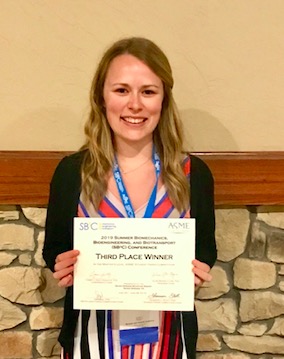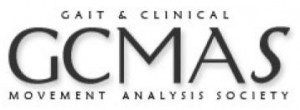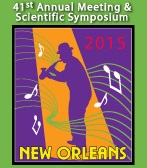Google Scholar Citations List
Journal Article in Sensors Inertial measurement units (IMUs) are used to analyze running performance. While leveraging one sensor to estimate kinematic and kinetic variables is common, sparsity limits the number of digital biomarkers that can be evaluated. Aim: Shallow recurrent decoder networks (SHRED) can reconstruct a dense set of time-series signals from a single input sensor and have been successful in human mobility applications, highlighting the potential for this algorithm to monitor running. Methods: We trained and tested subject-specific SHRED models of nine subjects running on a treadmill to map from one input sensor to the remaining three IMUs. We ...
Journal article in Gait & Posture Children with cerebral palsy (CP) have an injury to the central nervous system around the time of birth that affects the development of the brain and spinal cord. This injury leads to changes in gait neuromechanics, including muscle activity and joint kinematics. Transcutaneous spinal cord stimulation (tSCS) is a novel neuromodulation technique that may improve movement and coordination in children with CP when paired with targeted physical therapy. Aim: How does the combination of tSCS and short-burst interval locomotor treadmill training (SBLTT) affect individual gait neuromechanics in children with CP? Methods: Four children with ...
Journal Article in IEEE Transactions on Neural Systems and Rehabilitation Engineering Powered mobility technology can be a powerful tool to facilitate self-initiated exploration and play for toddlers with motor disabilities. The joystick-controlled Permobil Explorer Mini is currently the only commercially available powered mobility device for children ages 1-3 years in the United States. However, many open questions persist regarding how joystick-based mobility technologies should be designed to optimally suit the developmental needs of toddlers. Aim: The purpose of this study was to quantify how toddlers with motor disabilities use the Explorer Mini during free exploration and play. Methods: For this ...
Journal Article in IEEE Transactions on Biomedical Engineering Non-invasive neuromodulation may be an alternative approach that can improve outcomes in CP when combined with physical therapy. Transcutaneous spinal cord stimulation (tSCS) is a novel, non-invasive neuromodulation technique that can modulate spinal and supraspinal circuits especially when implemented with physical therapy. Aim: The purpose of this pilot study was to evaluate the effects of transcutaneous spinal cord stimulation (tSCS) and short-burst interval locomotor treadmill training (SBLTT) on spasticity and mobility in children with cerebral palsy (CP). Methods: We employed a single-arm design with two interventions: SBLTT only, and tSCS + SBLTT, ...
Journal Article in PLoS ONE Computers and technology are essential tools for supporting the development of toddlers with and without disabilities. Developmentally appropriate access to technology can support toddlers in learning and play. While touch screens are a popular interaction modality for children under the age of three, they may not be appropriate for all children or all tasks. Aim: We know comparatively little about how toddlers interact with joystick-based technology, and more fundamental research is required to understand joystick interactions at different ages and developmental stages. Methods: We quantified how 36 nondisabled toddlers used a joystick to play a ...
Journal Article in PLoS ONE There is growing interest in the use of biofeedback-augmented gait training in cerebral palsy (CP). Audiovisual, sensorimotor, and immersive biofeedback paradigms are commonly used to elicit short-term gait improvements; however, outcomes remain variable. Because biofeedback training requires that individuals have the capacity to both adapt their gait in response to feedback and retain improvements across sessions, changes in either capacity may affect outcomes. Yet, neither has been explored extensively in CP. Aim: The aim of this study was to evaluate the extent to which individuals with CP adapt gait and retain improvements during multi-session practice with a multimodal ...
Journal Article in Journal of Biomechanics Quantifying individualized rehabilitation responses and optimizing therapy for each person is challenging. For interventions like treadmill training, there are multiple parameters, such as speed or incline, that can be adjusted throughout sessions. Aim: This study evaluates if causal modeling and Bayesian Additive Regression Trees (BART) can be used to accurately track the direct effects of treadmill training on gait. Methods: We developed a Directed Acyclic Graph (DAG) to specify the assumed relationship between training input parameters and spatiotemporal outcomes during Short Burst Locomotor Treadmill Training (SBLTT), a therapy designed specifically for children with cerebral ...
Journal Article in the 10th IEEE RAS EMBS Intl. Conference on Biomedical Robotics and Biomechatronics (BioRob). For toddlers with disabilities, assistive technologies can enable developmentally appropriate exploration, play, and participation, but little is known about how children interact with accessible interfaces, such as joysticks. Aim: The Permobil Explorer Mini is currently the only commercially available, FDA-cleared pediatric powered mobility device in the United States designed for children ages 12–36 months. In this paper, we present an instrumented Explorer Mini that enables us to quantitatively analyze how young children with disabilities learn to use and interact with joystick-based technology. Methods: We ...
Journal Article in Assistive Technology Access to powered mobility can support play and development for toddlers with disabilities. Using powered mobility in a standing posture has been theorized to support development of muscle coordination, balance, head and trunk stability, and transition to ambulation. Aim: The purpose of this study was to quantify and characterize joystick control, bodyweight support, and muscle activity while using the Permobil Explorer Mini in seated and supported standing postures. Methods: Nine children with mobility disabilities participated in four visits where they completed two, 15–20 minute play sessions, one in each posture, with a break between. Results: We ...
Journal Article in IEEE Access Sensing is a fundamental task for the monitoring, forecasting, and control of complex systems. In many applications, a limited number of sensors are available and must move with the dynamics. Currently, optimal path planning, like Kalman filter estimation, is required to enable sparse mobile sensing for state estimation. However, we show that arbitrary mobile sensor trajectories can be used. By adapting the Shallow REcurrent Decoder (SHRED) network with mobile sensors, their time-history can be used to encode global information of the measured high-dimensional state space. Aim: We leverage sparse mobile sensor trajectories for full-state estimation, ...
Journal Article in IEEE Transactions on Neural Systems and Rehabilitation Engineering Utilization of hand-tracking cameras, such as Leap, for hand rehabilitation and functional assessments is an innovative approach to providing affordable alternatives for people with disabilities. However, prior to deploying these commercially-available tools, a thorough evaluation of their performance for disabled populations is necessary. Aim: In this study, we provide an in-depth analysis of the accuracy of Leap’s hand-tracking feature for both individuals with and without upper-body disabilities for common dynamic tasks used in rehabilitation. Methods: Leap is compared against motion capture with conventional techniques such as signal correlations, mean ...
Journal Article in Journal of Biomechanics Cerebral palsy (CP) is a neurologic injury that impacts control of movement. Individuals with CP also often develop secondary impairments like weakness and contracture. Both altered motor control and secondary impairments influence how an individual walks after neurologic injury. However, understanding the complex interactions between and relative effects of these impairments makes analyzing and improving walking capacity in CP challenging. Aim: The purpose of this study was to investigate the interactions between neuromuscular impairments and gait in CP. Methods: We used a sagittal-plane musculoskeletal model and neuromuscular control framework to simulate crouch and nondisabled ...
Journal Article in Disability and Rehabilitation: Assistive Technology This research provides insights into the lived experiences of clinicians and caregivers of young children with CP regarding the prescription, provision, use and impact of first mobility aids, specifically ankle foot orthoses and walkers/gait trainers. Aim: The purpose of this study was to establish and understand the provision process and impacts of first mobility aids for children with cerebral palsy (CP) in the United States – specifically orthoses, walkers and gait-trainers. Methods: We performed a mixed-methods study including surveys and semi-structured interviews of caregivers of young children with CP (n = 10) ...
Journal Article in Scientific Reports Ankle exoskeletons alter whole-body walking mechanics, energetics, and stability by altering center-of-mass (CoM) motion. Controlling the dynamics governing CoM motion is, therefore, critical for maintaining efficient and stable gait. However, how CoM dynamics change with ankle exoskeletons is unknown, and how to optimally model individual-specific CoM dynamics, especially in individuals with neurological injuries, remains a challenge. Aim: Evaluate individual-specific changes in CoM dynamics in unimpaired adults and one individual with post-stroke hemiparesis while walking in shoes-only and with zero-stiffness and high-stiffness passive ankle exoskeletons. Methods: To identify optimal sets of physically interpretable mechanisms describing CoM ...
Journal Article in SIAM Journal on Applied Dynamical Systems Physics-based and first-principles models pervade the engineering and physical sciences, allowing for the ability to model the dynamics of complex systems with a prescribed accuracy. The approximations used in deriving governing equations often result in discrepancies between the model and sensor-based measurements of the system, revealing the approximate nature of the equations and/or the signal-to-noise ratio of the sensor itself. In modern dynamical systems, such discrepancies between model and measurement can lead to poor quantification, often undermining the ability to produce accurate and precise control algorithms. Aim: Introduce a discrepancy modeling ...
Journal Article in Journal of NeuroEngineering and Rehabilitation Biofeedback is a promising noninvasive strategy to enhance gait training among individuals with cerebral palsy (CP). Commonly, biofeedback systems are designed to guide movement correction using audio, visual, or sensorimotor (i.e., tactile or proprioceptive) cues, each of which has demonstrated measurable success in CP. Aim: The aim of this study is to evaluate how the modality of biofeedback may influence user response which has significant implications if systems are to be consistently adopted into clinical care. Method: In this study, we evaluated the extent to which adolescents with CP (7M/1F; 14 [12.5,15.5] ...
Journal Article in Disability & Rehabilitation: Assistive Technology: The accessibility of the built environment is an important factor to consider when providing a mobility device to a young child and their family to use in the community. Aim: To quantify the driving patterns of children using an adapted ride-on car in their home and community environment over the course of a year using an integrated datalogger. Method: Fourteen children (2.5 ± 1.45 years old, 8 male: 6 female) used adapted ride-on cars outside and inside of their homes over the course of a year. We tracked their device use metrics with a custom ...
Journal Article in Journal of Biomechanics: Physiological and biomechanical responses to mechanical assistance from wearable technology are highly variable, especially for clinical populations; tools to predict how users respond to different types of exoskeleton assistance may optimize the prescription process and uncover underlying mechanisms driving locomotor changes in the context of personalized wearable/assistive technology. Aim: The purpose of this study was to determine if a discrepancy modeling framework could quantify individual-specific gait responses to ankle exoskeletons. Method: We employ a machine learning technique -- neural network based discrepancy modeling -- on gait data from 12 non-disabled adults to capture within-participant ...
Journal Article in Journal of Neurophysiology Understanding how the central nervous system coordinates diverse motor outputs has been a topic of extensive investigation. Although it is generally accepted that a small set of synergies underlies many common activities, such as walking, whether synergies are equally robust across a broader array of gait patterns or can be flexibly modified remains unclear. Aim: The aim of this study was to characterize the robustness of synergies to changing biomechanical constraints during walking. Specifically, we evaluated the extent to which nondisabled individuals could modulate both synergy structure and complexity while using motor control biofeedback ...
Journal Article in PLOS ONE: Causal inference is inherently ambiguous since we cannot observe multiple realizations of the same person with different characteristics. Causal models must be evaluated through indirect means and reasoning. Aim: The main objectives in conducting this study were to (1) propose a comprehensive model for quantifying the causes and consequences of walking impairments and (2) demonstrate the potential utility of the model for supporting clinical care and addressing basic scientific questions related to walking. Method: This paper introduced a model consisting of 10 nodes and 23 primary causal paths and demonstrated the model's utility using a ...
Journal Article in Assistive Technology: Our findings underscored the importance of monitoring how users change their gait kinematics when walking with the resistive device, with a specific emphasis on stance-phase lower limb extension. We also highlight the necessity of considering an individual’s functional status and amount of practice with the device, as well as more obvious factors, like device parameters. BART can be used early in the development of robotic gait training interventions to better understand complex and multifactorial user-device interactions. Aim: Although ankle exoskeletons offer a promising means of augmenting gait training and enhancing independent mobility among individuals with ...
Journal Article in Prosthetics and Orthotics International: This research provides insights into the lived experiences of individuals with CP and their caregivers regarding the process of obtaining and using an AFO. Further opportunities exist to support function and participation of people with CP by streamlining AFO provision processes, creating educational materials, and improving AFO design for comfort and ease of use. Aim: The study objective was to evaluate the lived experiences of individuals with CP and their caregivers regarding AFO access, use, and priorities. We examined experiences around the perceived purpose of AFOs, provision process, current barriers to use, and ...
Journal Article in ACM Transactions on Accessible Computing Many individuals with disabilities and/or chronic conditions (da/cc) experience symptoms that may require intermittent or on-going medical care. However, healthcare is an often-overlooked domain for accessibility work, where access needs associated with temporary and long-term disability must be addressed to increase the utility of physical and digital interactions with healthcare workers and spaces. Aim: Our work focuses on a specific domain of healthcare often used by individuals with da/cc: physical therapy (PT). Methods: Through a 12-person interview study, we examined how people’s access to PT for their da/cc is hampered by social ...
Journal Article in Experimental Brain Research Individuals with cerebral palsy (CP) display motor control patterns that suggest decreased supraspinal input, but it remains unknown if they are able to modulate lower-limb reflexes in response to more complex tasks, or whether global motor control patterns relate to reflex modulation capacity in this population. Aim: To further elucidate the multifaceted effects of CP on inhibitory and faciliatory supraspinal pathways and global measures of motor control, providing novel information for improving targeted neuromuscular interventions in this patient population. Methods: Eight ambulatory individuals with CP (12–18 years old) were recruited to complete a task ...
Journal Article in Frontiers in Human Neuroscience Altered motor control is common in cerebral palsy (CP). Understanding how altered motor control affects movement and treatment outcomes is important but challenging due to complex interactions with other neuromuscular impairments. While regression can be used to examine associations between impairments and movement, causal modeling provides a mathematical framework to specify assumed causal relationships, identify covariates that may introduce bias, and test model plausibility. Aim: The goal of this research was to quantify the causal effects of altered motor control and other impairments on gait, before and after single-event multi-level orthopedic surgery (SEMLS) ...
Journal Article in Journal of Biomechanics Muscle activity during gait can be described by a small set of synergies, weighted groups of muscles, that are theorized to reflect underlying neural control. For people with neurologic injuries, like cerebral palsy or stroke, even fewer synergies are required to explain muscle activity during gait. This reduction in synergies is thought to reflect altered control and is associated with impairment severity and treatment outcomes. Individuals with neurologic injuries also develop secondary musculoskeletal impairments, like weakness or contracture, that can impact gait. Yet, the combined impacts of altered control and musculoskeletal impairments on gait ...
Journal Article in Applied System Innovation: This work highlights the potential of wearable technologoies to monitor muscle activity changes during stroke recovery in acute clinical settings and their importance for motivation and understanding of progression from the survivor's point of view: 'I was hopeful that it would show signs of things that are occurring when I couldn’t physically feel it…if you had other scientific evidence that things were happening, even beyond their notion that it would, it gives you a lot of hope. You just have to be patient, and it’s harder to take when someone tells you, but easier ...
Journal Article in The Royal Society: This work highlights the potential of data-driven models grounded in dynamical systems theory to predict complex individualized responses to ankle exoskeletons., without requiring explicit knowledge of the individual's physiology or motor control Aim: Evaluate the ability of three classes of subject-specific phase-varying (PV) models to predict kinematic and myoelectric responses to ankle exoskeletons during walking, without requiring prior knowledge of specific user characteristics. Method: Data from 12 unimpaired adults walking with bilateral passive ankle exoskeletons were captured. PV, linear PV (LPV), and nonlinear PV (NPV) models leveraged Floquet theory to kinematics and muscle activity in ...
Journal Article in ACM Conference on Human Factors in Computing Systems (CHI) 2020 Preceedings: These results suggest that control theory modeling can provide a platform to successfully quantify device performance in the absence of errors arising from motor impairments Photo (top and bottom) of a user using a slider (top) and muscles (bottom) to control a cursor on the screen. (Top image) Side image of user. User rests their elbow and pinches the slider and moves the slider towards and away from their body to control the cursor. (Bottom image) Side image of user. User is strapped to a rigid device ...
Journal Article in Developmental Medicine & Child Neurology: This retrospective analysis demonstrated that energy consumption is not reduced after rhizotomy when compared to matched controls with cerebral palsy. Aim: To determine whether energy consumption changes after selective dorsal rhizotomy (SDR) among children with cerebral palsy (CP). Method: We retrospectively evaluated net nondimensional energy consumption during walking among 101 children with bilateral spastic CP who underwent SDR (59 males, 42 females; median age [5th centile, 95th centile] 5y 8mo [4y 2mo, 9y 4mo]) compared to a control group of children with CP who did not undergo SDR. The control group was matched ...
Journal Article in Prosthetics & Orthotics International Background Assessments of human movement are clinically important. However, accurate measurements are often unavailable due to the need for expensive equipment or intensive processing. For orthotists and therapists, shank-to-vertical angle (SVA) is one critical measure used to assess gait and guide prescriptions. Smartphone-based sensors may provide a widely-available platform to expand access to quantitative assessments. Objectives Assess accuracy and repeatability of smartphone-based measurement of SVA compared to marker-based 3D motion analysis. Method Four licensed clinicians (two physical therapists and two orthotists) measured SVA during gait with a smartphone attached to the anterior or ...
Journal Article in Journal of NeuroEngineering & Rehabilitation Background Accelerometers have become common for evaluating the efficacy of rehabilitation for patients with neurologic disorders. For example, metrics like use ratio (UR) and magnitude ratio (MR) have been shown to differentiate movement patterns of children with cerebral palsy (CP) compared to typically-developing (TD) peers. However, these metrics are calculated from “activity counts” – a measure based on proprietary algorithms that approximate movement duration and intensity from raw accelerometer data. Algorithms used to calculate activity counts vary between devices, limiting comparisons of clinical and research results. The goal of this research was ...
Journal Article in Frontiers of Neurorobotics: This study demonstrated that muscle activations estimated from static optimization using generic musculoskeletal modeling does not accurately predict EMG profiles for children with CP or TD peers. Constraining activation patterns to experimentally measured synergies increased estimated muscle stresses, but did not improve the estimation of muscle activations for either group. Background Neuromusculoskeletal simulation provides a promising platform to inform the design of assistive devices or inform rehabilitation. For these applications, a simulation must be able to accurately represent the person of interest, such as an individual with a neurologic injury. If a simulation fails ...
Journal Article in Journal of Biomechanics: Musculoskeletal models of gait with lower dimensional control spaces showed that an individual with reduced number of synergies could not produce an unimpaired gait Background: Recent studies have postulated that the human motor control system recruits groups of muscles through low-dimensional motor commands, or muscle synergies. This scheme simplifies the neural control problem associated with the high-dimensional structure of the neuromuscular system. Several lines of evidence have suggested that neurological injuries, such as stroke or cerebral palsy, may reduce the dimensions that are available to the motor control system, and these altered dimensions or synergies ...
Journal Article in Archives of Physical Medicine and Rehabilitation: We collaborated with rehabilitation clinicians across the Seattle region to understand the barriers and facilitators of using wireless electromyography sensors to track motor recovery in the clinic and community Objective: To examine the perceived value, benefits, drawbacks, and ideas for technology development and implementation of surface electromyography recordings in neurologic rehabilitation practice from clinical stakeholder perspectives. Design: A qualitative, phenomenological study was conducted. In-depth, semistructured interviews and focus groups were completed. Sessions included questions about clinician perspectives and demonstrations of surface electromyography systems to garner perceptions of specific system features. Setting: The study was conducted at hospital ...
Journal Article in Journal of NeuroEngineering and Rehabilitation: In collaboration with University Hospital Pellenberg we examined whether muscle synergies change following common treatments in CP. Background: Children with cerebral palsy (CP) have altered synergies compared to typically-developing peers, reflecting different neuromuscular control strategies used to move. While these children receive a variety of treatments to improve gait, whether synergies change after treatment, or are associated with treatment outcomes, remains unknown. Methods: We evaluated synergies for 147 children with CP before and after three common treatments: botulinum toxin type-A injection (n = 52), selective dorsal rhizotomy (n = 38), and multi-level orthopaedic surgery (n = 57). Changes in synergy ...
Journal Article in Gait & Posture: Repeatability of EMG is similar between typically developing children and children with cerebral palsy. Background: Clinical gait analysis is commonly used in the evaluation and treatment of children with cerebral palsy (CP). While the repeatability of kinematic and kinetic measures of gait has previously been evaluated, the repeatability of electromyography (EMG) recordings or measures calculated from EMG data, such as muscle synergies, remains unclear for this population. Research Question: Are EMG recordings and muscle synergies from clinical gait analysis repeatable between visits for children with CP? Methods: We recruited 20 children with bilateral CP who had been ...
Journal article in Archives of Physical Medicine and Rehabilitation: In collaboration with Gillette Children's Hospital and University Hospital Pellenberg we examined whether associations between treatment outcomes and muscles synergies are robust between clinical centers. Objective: To determine whether patient-specific differences in motor control quantified using muscle synergy analysis were associated with changes in gait after treatment of cerebral palsy (CP) across 2 clinical centers with different treatments and clinical protocols. Design: Retrospective cohort study. Setting: Clinical medical center. Participants: Center 1: children with CP (n=473) and typically developing (TD) children (n=84). Center 2: children with CP (n=163) and TD children (n=12). Interventions: Standard clinical ...
Journal article in International Journal for Designs for Learning Abstract: The purpose of makerspaces is to increase access to “making” among the general community. Because of this social justice orientation, it is important to consider how welcoming and accessible makerspaces are to individuals with diverse abilities, including individuals with disabilities. This design brief examines a three-step process used to make a university-based makerspace more accessible and welcoming to individuals with disabilities including a tour, design activity, and brainstorming session. The process helped identify simple changes that were made to the makerspace, as well as increasing student, faculty, and community access. Using a similar process, other makerspaces could improve the accessibility ...
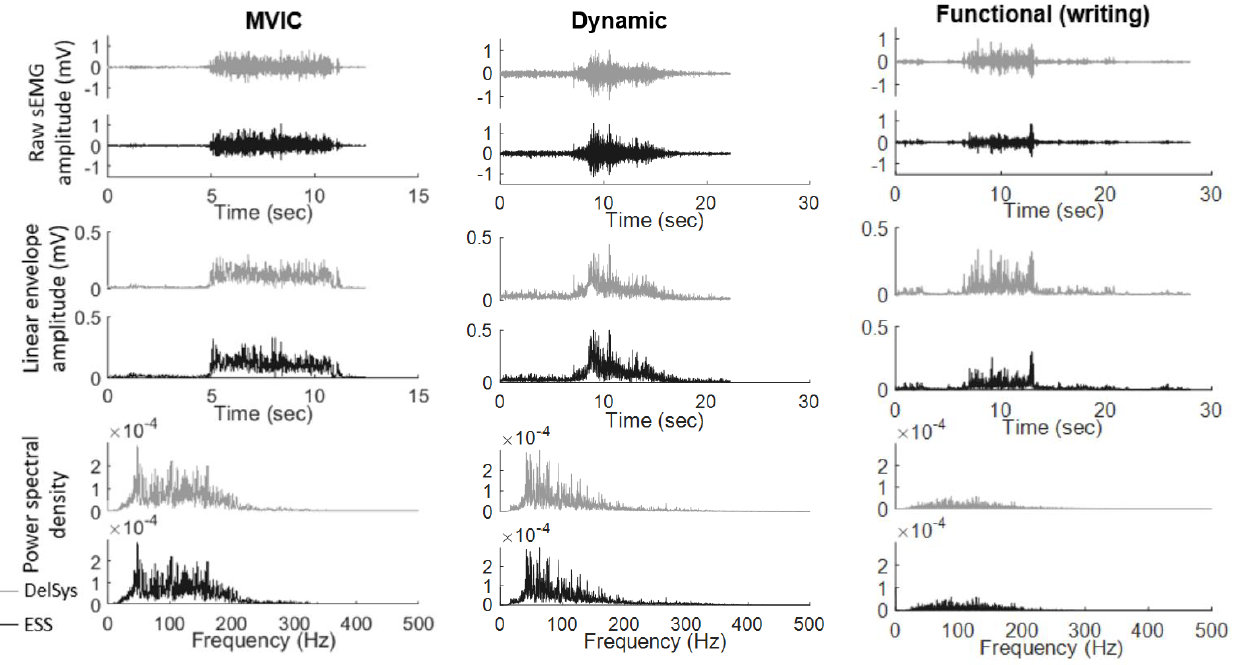
Journal article in Sensors: In collaboration with University of Texas - Austin, we evaluated a new flexible, gold-based epidermal electrode for sensing muscle activity. Background: Commercially available electrodes can only provide quality surface electromyography (sEMG) measurements for a limited duration due to user discomfort and signal degradation, but in many applications, collecting sEMG data for a full day or longer is desirable to enhance clinical care. Few studies for long-term sEMG have assessed signal quality of electrodes using clinically relevant tests. The goal of this research was to evaluate flexible, gold-based epidermal sensor system (ESS) electrodes for long-term sEMG recordings ...
Journal article in PLOSOne: In collaboration with the University of Washington Prosthetics and Orthotics Division, a user-centered design approach was used to improve the design and wearability of a passive, wrist-driven orthosis. To read the article in full, click HERE. To access the open-source print files, click HERE. Background: Assistive technology, such as wrist-driven orthoses (WDOs), can be used by individuals with spinal cord injury to improve hand function. A lack of innovation and challenges in obtaining WDOs have limited their use. These orthoses can be heavy and uncomfortable for users and also time-consuming for orthotists to fabricate. Purpose/Methods: The goal ...
Journal Article in Frontiers in Human Neuroscience: Despite significant differences in kinematics children with Duchenne muscular dystrophy have similar control complexity to typically developing children. Abstract: Cerebral palsy (CP) and Duchenne muscular dystrophy (DMD) are neuromuscular disorders characterized by muscle weakness. Weakness in CP has neural and non-neural components, whereas in DMD, weakness can be considered as a predominantly non-neural problem. Despite the different underlying causes, weakness is a constraint for the central nervous system when controlling gait. CP demonstrates decreased complexity of motor control during gait from muscle synergy analysis, which is reflected by a higher total variance accounted for ...
Journal article in Journal of Electromyography and Kinesiology: In collaboration with Rehabilitation Medicine here at the University of Washington, we evaluated muscle use of 20 unimpaired participants during three upper-extremity functional tests. An interactive supplement can be found HERE. Background: Performance-based tests, such as the Jebsen Taylor Hand Function Test or Chedoke Arm and Hand Activity Inventory, are commonly used to assess functional performance after neurologic injury. However, the muscle activity required to execute these tasks is not well understood, even for unimpaired individuals. The purpose of this study was to evaluate unimpaired muscle recruitment and coordination of the dominant and non-dominant limbs ...
Journal article in Journal of Biomechanics: How does the stiffness of an AFO impact the muscultendon dynamics of the gastrocnemius? Abstract Ankle foot orthoses (AFOs) are designed to improve gait for individuals with neuromuscular conditions and have also been used to reduce energy costs of walking for unimpaired individuals. AFOs influence joint motion and metabolic cost, but how they impact muscle function remains unclear. This study investigated the impact of different stiffness ankle foot orthoses (AFOs) on medial gastrocnemius muscle (MG) and Achilles tendon (AT) function during two different walking speeds. We performed gait analyses for eight unimpaired individuals. Each individual ...
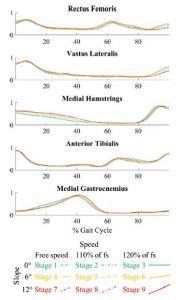
Journal article in Journal of Biomechanics: In collaboration with Gillette Children's Specialty Healthcare, we evaluated whether muscle synergies change when unimpaired individuals walk at different speeds and slopes. Background: The aim of this study was to determine whether changes in synergies relate to changes in gait while walking on a treadmill at multiple speeds and slopes. The hypothesis was that significant changes in movement pattern would not be accompanied by significant changes in synergies, suggesting that synergies are not dependent on the mechanical constraints but are instead neurological in origin. Methods: Sixteen typically developing children walked on a treadmill for nine combinations ...
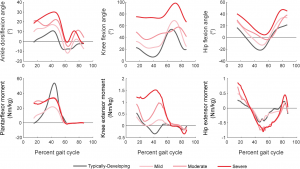
Journal article in PLOS ONE: Michael Rosenberg and Kat Steele investigate the impacts of ankle foot orthoses on children with cerebral palsy and typically-developing peers through simulation. Background Passive ankle foot orthoses (AFOs) are often prescribed for children with cerebral palsy (CP) to assist locomotion, but predicting how specific device designs will impact energetic demand during gait remains challenging. Powered AFOs have been shown to reduce energy costs of walking in unimpaired adults more than passive AFOs, but have not been tested in children with CP. Aim The goal of this study was to investigate the potential impact of powered and ...
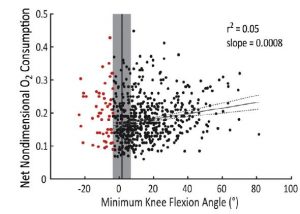
Journal article in Journal of Biomechanics: Does energy consumption during walking increase with crouch severity among children with cerebral palsy? Abstract: Children with cerebral palsy (CP) expend more energy to walk compared to typically-developing peers. One of the most prevalent gait patterns among children with CP, crouch gait, is often singled out as especially exhausting. The dynamics of crouch gait increase external flexion moments and the demand on extensor muscles. This elevated demand is thought to dramatically increase energy expenditure. However, the impact of crouch severity on energy expenditure has not been investigated among children with CP. We evaluated oxygen consumption ...
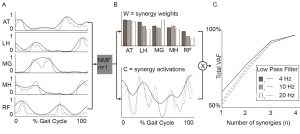
Journal article in Frontiers in Computational Neuroscience: Filtering parameters impact the results from muscle synergy analyses. Abstract: Muscle synergies calculated from electromyography (EMG) data identify weighted groups of muscles activated together during functional tasks. Research has shown that fewer synergies are required to describe EMG data of individuals with neurologic impairments. When considering potential clinical applications of synergies, understanding how EMG data processing impacts results and clinical interpretation is important. The aim of this study was to evaluate how EMG signal processing impacts synergy outputs during gait. We evaluated the impacts of two common processing steps for synergy analyses: low pass (LP) ...
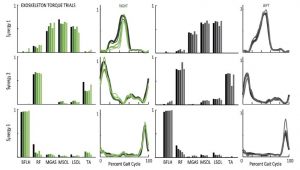
Journal article in Journal of Biomechanics: How do muscle activations and synergies change when an individual wears an ankle exoskeleton during gait? Abstract: Exoskeletons have the potential to assist and augment human performance. Understanding how users adapt their movement and neuromuscular control in response to external assistance is important to inform the design of these devices. The aim of this research was to evaluate changes in muscle recruitment and coordination for ten unimpaired individuals walking with an ankle exoskeleton. We evaluated changes in the activity of individual muscles, cocontraction levels, and synergistic patterns of muscle coordination with increasing exoskeleton work and ...
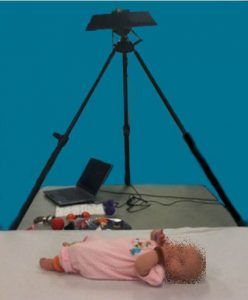
Peer-reviewed paper at European Conference on Computer Vision: 30-second videos from a depth camera can be used in the evaluation of infants with spinal muscular atrophy. Abstract: Spinal Muscular Atrophy is the most common genetic cause of infant death. Due to its severity, there is a need for methods for automated estimation of disease progression. In this paper we propose a Convolutional-Neural-Network (CNN) model to estimate disease progression during infants’ natural behavior. With the proposed methodology, we were able to predict each child’s score on current behavior-based clinical exams with an average per-subject error of 6.96 out of 72 points (<10 % ...
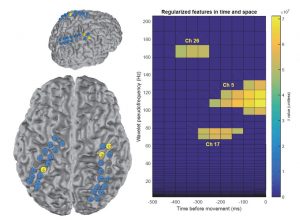
Peer-reviewed paper at IEEE Engineering in Medicine & Biology Annual Conference: Can we estimate upper-extremity force production from electrocorticographic recordings? Abstract: Neural correlates of movement planning onset and direction may be present in human electrocorticography in the signal dynamics of both motor and non-motor cortical regions. We use a three-stage model of jPCA reduced-rank hidden Markov model (jPCA-RR-HMM), regularized shrunken-centroid discriminant analysis (RDA), and LASSO regression to extract direction-sensitive planning information and movement onset in an upper-limb 3D isometric force task in a human subject. This mode achieves a relatively high true positive force-onset prediction rate of 60% within 250ms, and ...
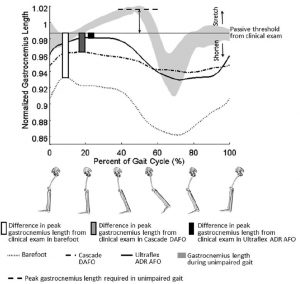
Journal article in Prosthetics & Orthotics International: How does the operating length of the gastrocnemius vary with different common AFOs in children with cerebral palsy? Background: Many individuals with cerebral palsy wear ankle foot orthoses during daily life. Orthoses influence joint motion, but how they impact muscle remains unclear. In particular, the gastrocnemius is commonly stiff in cerebral palsy. Understanding whether orthoses stretch or shorten this muscle during daily life may inform orthosis design and rehabilitation. Objectives: This study investigated the impact of different ankle foot orthoses on gastrocnemius operating length during walking in children with cerebral palsy. Study design: Case series, within ...
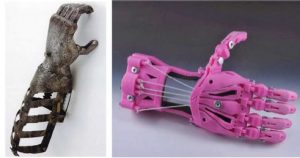
Peer-review paper at CHI Human Factors in Computing Systems Annual Conference: Prostheses are more than just a tool to enhance function - they strongly influence perceptions of identity and normalcy. Abstract: This paper is about the aspects of ability, selfhood, and normalcy embodied in people's relationships with prostheses. Drawing on interviews with 14 individuals with upper-limb loss and diverse experiences with prostheses, we find people not only choose to use and not use prosthesis throughout their lives but also form close and complex relationships with them. The design of "assistive" technology often focuses on enhancing function; however, we found that prostheses ...

Journal article in the Journal of Medical Case Reports: A case study of crouch gait over 8-years in a child with no surgical interventions. Background: This case report provides a unique look at the progression of crouch gait in a child with cerebral palsy over an 8-year time period, through annual physical examinations, three-dimensional gait analyses, and evaluation of postural balance. Our patient received regular botulinum toxin-A injections, casting, and physical therapy but no surgical interventions. Case presentation: A white American boy with spastic diplegic cerebral palsy was evaluated annually by clinical motion analyses, including physical examination, joint kinematics, electromyography, energy expenditure, ...
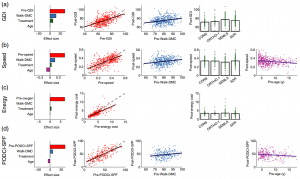
Journal article in Developmental Medicine & Child Neurology: Kat Steele partnered with Michael Schwartz from Gillette Children's Specialty Healthcare to investigate the impact of dynamic motor control on varying treatments in children with cerebral palsy. Aim To estimate the impact of dynamic motor control on treatment outcomes in children with cerebral palsy. Method We used multiple regression on a retrospective cohort of 473 ambulatory children with cerebral palsy who underwent conservative treatment, single-level orthopaedic surgery, single-event multi-level orthopaedic surgery, or selective dorsal rhizotomy. Outcomes included gait pattern, gait speed, energy cost of walking, and the Pediatric Outcomes Data Collection Instrument. Explanatory ...
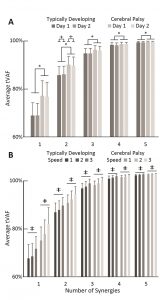
Journal article in Gait and Posture: Filtering parameters impact the results from muscle synergy analyses. Abstract: Muscle synergies are typically calculated from electromyographic (EMG) signals using nonnegative matrix factorization. Synergies identify weighted groups of muscles that are commonly activated together during a task, such as walking. Synergy analysis has become an emerging tool to evaluate neuromuscular control; however, the repeatability of synergies between trials and days has not been evaluated. The goal of this study was to evaluate the repeatability of synergy complexity and structure in unimpaired individuals and individuals with cerebral palsy (CP). EMG data were collected from eight lower-limb muscles ...
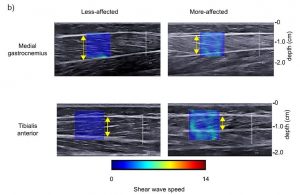
Journal article in Clinical Biomechanics: Kat Steele partnered with Sabrina Lee from Northwestern University and the Rehabilitation Institute of Chicago to investigate shearwave ultrasound elastography as a new tool to quantify changes in muscle properties in cerebral palsy. Abstract: Individuals with cerebral palsy tend to have altered muscle architecture and composition, but little is known about the muscle material properties, specifically stiffness. Shear wave ultrasound elastography allows shear wave speed, which is related to stiffness, to be measured in vivo in individual muscles. Our aim was to evaluate the material properties, specifically stiffness, as measured by shear wave speed of the medial ...
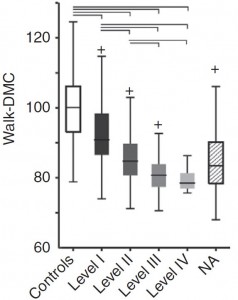
Journal article accepted in Developmental Medicine & Child Neurology: Kat Steele partnered with Mike Schwartz and Adam Rozumalski of Gillette Children's Specialty Healthcare to complete one of the largest studies to date of individuals with cerebral palsy. They quantified how neuromuscular control is altered among individuals with cerebral palsy and how this altered control can contribute to impaired function. Abstract: Individuals with cerebral palsy (CP) have impaired movement due to a brain injury near birth. Understanding how neuromuscular control is altered in CP can provide insight into pathological movement. We sought to determine if individuals with CP demonstrate reduced complexity of ...

Paper at American Society of Engineering Education Brianna Blaser and Kat Steele presented their paper, “Including universal design in engineering courses to attract diverse students” at the American Society for Engineering Education annual conference in Seattle, WA on June 17, 2015. This paper reported the results of a survey to current students with disabilities about their experiences in engineering classes and how accessibility and universal design may be incorporated into the engineering curriculum. Abstract: Research has shown that members of some groups, including women and people with disabilities, are particularly interested in how their fields of study, such as engineering, ...
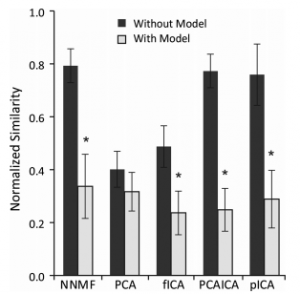
Journal article in Journal of Neurophysiology: Consequences of biomechanically constrained tasks in the design and interpretation of synergy analyses Matrix factorization algorithms are commonly used to analyze muscle activity and provide insight into neuromuscular control. These algorithms identify low-dimensional subspaces, commonly referred to as synergies, which can describe variation in muscle activity during a task. Synergies are often interpreted as reflecting underlying neural control; however, it is unclear how these analyses are influenced by biomechanical and task constraints, which can also lead to low-dimensional patterns of muscle activation. The aim of this study was to evaluate whether commonly used algorithms ...
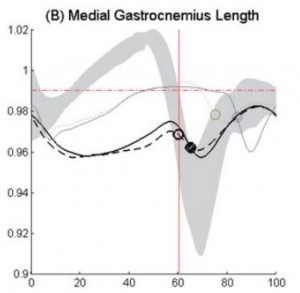
Journal article accepted in Disability and Rehabilitation: Using musculoskeletal modeling to evaluate the effect of ankle foot orthosis tuning on musculotendon dynamics: a case study. This case study examines the influence of an ankle foot orthosis footwear combination (AFO-FC) on musculotendon lengths and gait kinematics and kinetics after right thrombotic stroke resulting in left hemiplegia. Methods: Gait analysis was performed over three visits where the subject walked with an AFO-FC with two shank-to-vertical angle (SVA) alignments, a posterior leaf spring AFO (PLS AFO), and shoes alone. Biomechanical and musculoskeletal modeling was used to evaluate musculotendon lengths, kinematics, and kinetics for ...
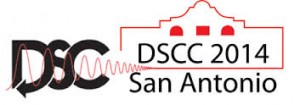
Paper accepted at ASME Dynamics Systems and Control Conference: Using dynamic musculoskeletal simulation to evaluate altered muscle properties in cerebral palsy Abstract: Cerebral palsy is caused by an injury to the brain, but also causes many secondary changes in the musculoskeletal system. Altered muscle properties such as contracture, an increased passive resistance to stretch, are common but vary widely between individuals and between muscles. Quantifying these changes is important to understand pathologic movement and create patient-specific treatment plans. Musculoskeletal modeling and simulation have increasingly been used to evaluate pathologic movement in CP; however, these models are based upon muscle properties of unimpaired individuals. In this study, we used a dynamic musculoskeletal simulation ...
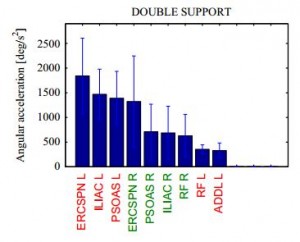
Journal article accepted in Journal of Biomechanics: Contributions of individual muscles to the sagittal- and frontal-plane angular accelerations of the trunk in walking. This study was conducted to analyze the unimpaired control of the trunk during walking. Studying the unimpaired control of the trunk reveals characteristics of good control. These characteristics can be pursued in the rehabilitation of impaired control. Impaired control of the trunk during walking is associated with aging and many movement disorders. This is a concern as it is considered to increase fall risk. Muscles that contribute to the trunk control in normal walking may also contribute ...

Journal article accepted in International Journal of Engineering Education: Feedback from in-class worksheets and discussion improves performance on the Statics Concept Inventory. The Statics Concept Inventory (SCI) is used to evaluate students’ conceptual understanding in introductory mechanics courses. Previous studies have shown that although performance on the SCI improves at the end of a course, performance is often still unsatisfactory with scores well below 100%. In this study, we sought to determine if providing feedback on conceptual topics through in-class worksheets and discussion would improve students’ performance on the SCI. To test this hypothesis, we designed eight multiple-choice worksheets, each ...
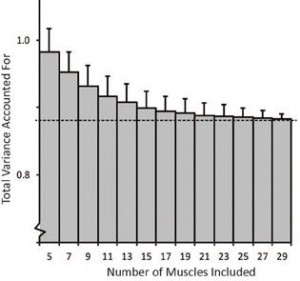
Journal article accepted in Frontiers in Computational Neuroscience: The number and choice of muscles impact the results of muscle synergy analyses One theory for how humans control movement is that muscles are activated in weighted groups or synergies. Studies have shown that electromyography (EMG) from a variety of tasks can be described by a low-dimensional space thought to reflect synergies. These studies use algorithms, such as nonnegative matrix factorization, to identify synergies from EMG. Due to experimental constraints, EMG can rarely be taken from all muscles involved in a task. However, it is unclear if the choice of muscles included ...
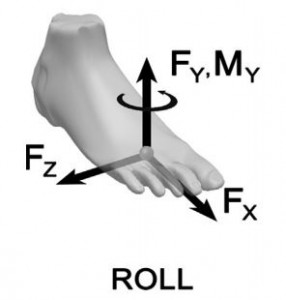
Journal article accepted in Journal of Biomechanics A rolling constraint reduces ground reaction forces and moments in dynamic simulations of walking, running, and crouch gait Recent advances in computational technology have dramatically increased the use of muscle-driven simulation to study accelerations produced by muscles during gait. Accelerations computed from muscle-driven simulations are sensitive to the model used to represent contact between the foot and ground. A foot-ground contact model must be able to calculate ground reaction forces and moments that are consistent with experimentally measured ground reaction forces and moments. We show here that a rolling constraint can model foot-ground ...
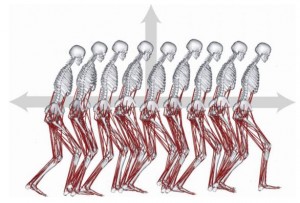
Journal article accepted in Gait & Posture: Muscle contributions to vertical and fore-aft accelerations are altered in subjects with crouch gait. The goals of this study were to determine if the muscle contributions to vertical and fore-aft acceleration of the mass center differ between crouch gait and unimpaired gait and if these muscle contributions change with crouch severity. Examining muscle contributions to mass center acceleration provides insight into the roles of individual muscles during gait and can provide guidance for treatment planning. We calculated vertical and fore-aft accelerations using musculoskeletal simulations of typically developing children and children with cerebral palsy ...
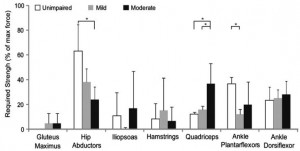
Journal article accepted in Journal of Biomechanics: How much muscle strength is required to walk in a crouch gait? Muscle weakness is commonly cited as a cause of crouch gait in individuals with cerebral palsy; however, outcomes after strength training are variable and mechanisms by which muscle weakness may contribute to crouch gait are unclear. Understanding how much muscle strength is required to walk in a crouch gait compared to an unimpaired gait may provide insight into how muscle weakness contributes to crouch gait and assist in the design of strength training programs. The goal of this study was to ...
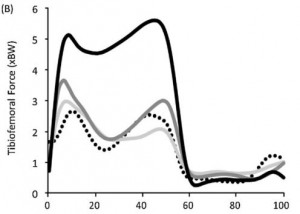
Journal article accepted in Gait & Posture: Compressive tibiofemoral forces during crouch gait Crouch gait, a common walking pattern in individuals with cerebral palsy, is characterized by excessive flexion of the hip and knee. Many subjects with crouch gait experience knee pain, perhaps because of elevated muscle forces and joint loading. The goal of this study was to examine how muscle forces and compressive tibiofemoral force change with the increasing knee flexion associated with crouch gait. Muscle forces and tibiofemoral force were estimated for three unimpaired children and nine children with cerebral palsy who walked with varying degrees of knee ...
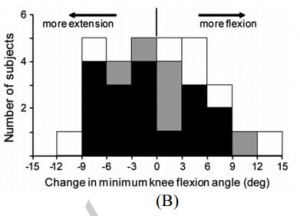
Journal article accepted in Journal of Pediatric Rehabilitation Medicine: Characteristics associated with improved knee extension after strength training for individuals with cerebral palsy and crouch gait Muscle weakness may contribute to crouch gait in individuals with cerebral palsy, and some individuals participate in strength training programs to improve crouch gait. Unfortunately, improvements in muscle strength and gait are inconsistent after completing strength training programs. The purpose of this study was to examine changes in knee extensor strength and knee extension angle during walking after strength training in individuals with cerebral palsy who walk in crouch gait and to determine subject ...
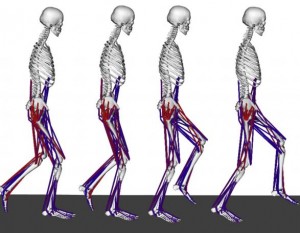
Journal article accepted in Journal of Biomechanics: Muscle contributions to support during single-limb stance in crouch gait Pathological movement patterns like crouch gait are characterized by abnormal kinematics and muscle activations that alter how muscles support the body weight during walking. Individual muscles are often the target of interventions to improve crouch gait, yet the roles of individual muscles during crouch gait remain unknown. The goal of this study was to examine how muscles contribute to mass center accelerations and joint angular accelerations during single-limb stance in crouch gait, and compare these contributions to unimpaired gait. Subject-specific dynamic simulations were ...
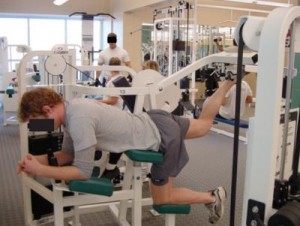
Journal article accepted in Physical Therapy: Can strength training predictably improve gait kinematics in cerebral palsy? Background: Computer simulations have demonstrated that excessive hip and knee flexion during gait, as frequently seen in ambulatory children with cerebral palsy (CP), can reduce the ability of muscles to provide antigravity support and increase the tendency of hip muscles to internally rotate the thigh. These findings suggest that therapies for improving upright posture during gait also may reduce excessive internal rotation. Objective: The goal of this study was to determine whether strength training can diminish the degree of crouched, internally rotated gait in children ...
Conference Abstracts

